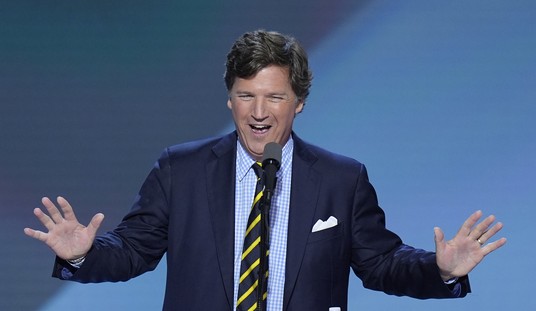Last year I became a Diplomate, American Board of Clinical Lipidology, having passed the rigorous certification exam by the National Lipid Association (NLA). This certification program was established for various specialists in cardiovascular disease (CVD) prevention treating, in particular, more complex disorders of lipid metabolism, whose most common manifestation is excessively high blood levels of cholesterol, and/or triglycerides. Untreated, or inadequately treated, such lipid disorders put patients at increased risk for de novo or recurrent clinical CVD (such as heart attacks, certain kinds of strokes, and diseases of the large arteries of the abdomen, and lower extremities), and in some instances, pancreatitis (dangerous, and potentially debilitating, or even fatal inflammation of the pancreas).
The NLA publishes a peer-reviewed academic medical journal, The Journal of Clinical Lipidology, to which I have contributed original research. “Lipid Spin,” is a clinically-oriented, non peer reviewed ancillary publication of the NLA. As part of my professional commitment to the NLA, I was assigned to write a short review and analysis of the opinion editorial, “Limiting ‘Sugary Drinks’ to Reduce Obesity — Who Decides?”, which originally appeared in the New England Journal of Medicine (NEJM) on April 13, 2013. The clinically relevant tie-in, from NLA’s perspective, was that obesity, and obesity-related development of (type 2) diabetes (i.e., the most common adult form of the disease) are associated with increased risk for CVD, and the presence of mixed lipid disorders.
Having (willfully) ignored such NEJM “policy” op-eds in the past—the only NEJM “perspective” essays I read accompany the peer-reviewed, published results of major clinical trials, or epidemiological studies—this novel experience is related in some 500 words, below, which may (or may not) appear someday in “Lipid Spin.” These words should prove more broadly edifying (or just validating?) appearing herein. Suffice to say, the same doctrinaire Left claptrap that effortlessly pervades the rest of the academy, is also found in one of the medical academy’s “flagship” journals.
Res ipsa loquitur.
**
Mariner and Annas, in their April 3, 2013 NEJM “Perspective” essay, provide a generally informative legal discussion of the fate of The New York City Board of Health’s “sugary drinks” Portion Cap Rule, highlighting the grounds for its rejection in a March 11, 2013 ruling by New York County Supreme Court Justice Milton A. Tingling. The Portion Cap Rule would have proscribed “sugary drinks,” defined as sugar (or another caloric sweetening agent) containing beverages with a caloric density of > 25 calories per 8 fluid ounces, and dispensed in volumes > 16 ounces.
Judge Tingling rendered his opinion based on four findings against the Rule: (1) he objected to the Rule being “laden” with arbitrary political and economic exceptions; (2) he denied the Board of Health’s authority to ostensibly “control” chronic disease by banning a legal product; (3) he claimed the Board of Health violated the separation-of-powers doctrine, exceeding its administrative purview, and acting like a legislative body; (4) he cited other arbitrary and capricious features of the Rule, such as excluding certain beverages with greater concentrations of sugar sweeteners, and the failure to impose limits on refills.
The authors emphasize that both the Board of Health and petitioners opposing the Rule accepted that “obesity is a serious problem.” But curiously, Mariner and Annas, failed to identify the petitioners by name—i.e., the Hispanic Chambers of Commerce (primary), The New York Korean-American Grocers Association, Soft Drink and Brewery Workers Union, Local 812, International Brotherhood of Teamsters, the National Restaurant Association, the National Association of Theatre Owners of New York State, and the American Beverage Association—and ignored the petitioners sound arguments challenging the epidemiological association between sugary drinks and obesity.
Perhaps these selective omissions foreshadow the authors transition from a sober discussion of the legal case, and ruling, to a muddled and preening avowal of their public health utopianism. As Mariner and Annas note, even the vacuous Jon Stewart (albeit via the words, assuredly, of one of his more astute writers) opined that the Portion Cap Rule epitomized a perverse melding of “draconian government overreach and probable lack of results.” Despite this candid acknowledgment, Mariner and Annas make a pitch for taxing our way to public health utopia, but seemingly relent because such a taxation scheme may not be “progressive” enough. They then proceed to denounce campaigns which purportedly “shame” the overweight, before concluding with an excoriation of “large corporations” for their alleged nefarious machinations to “derail public health measures that could reduce their profits.” This latter fulmination does not withstand the barest common sense scrutiny. “Large corporations” (and smaller ones too!), which employ hundreds of thousands of hard-working, decent Americans, produce a cornucopia of heavily advertised no calorie beverage alternatives (“Got diet soda?”; “Got seltzer?”; “Got bottled water?”, etc.)
Pace these irrefragable facts, in the moral universe of Mariner and Annas, such legal corporate enterprises are to be collectively “shamed.” Shaming the obese is not an ethical policy, nor will it likely curtail obesity. The same moral and policymaking logic applies to shaming corporations and their employees. It is a pity Mariner and Annas have ideological blinders to that reality.









Join the conversation as a VIP Member